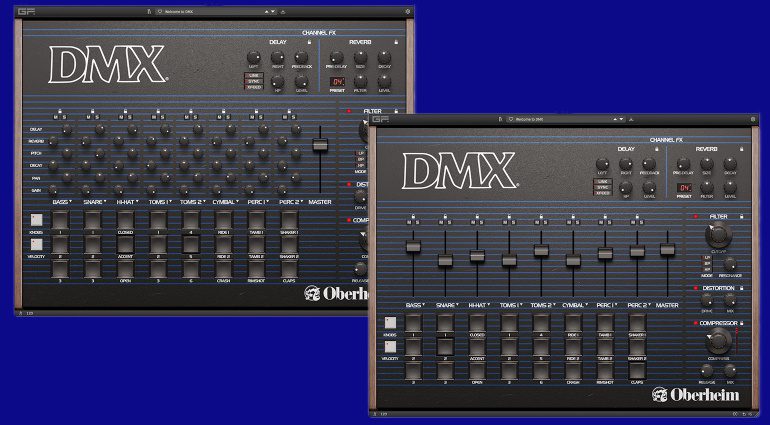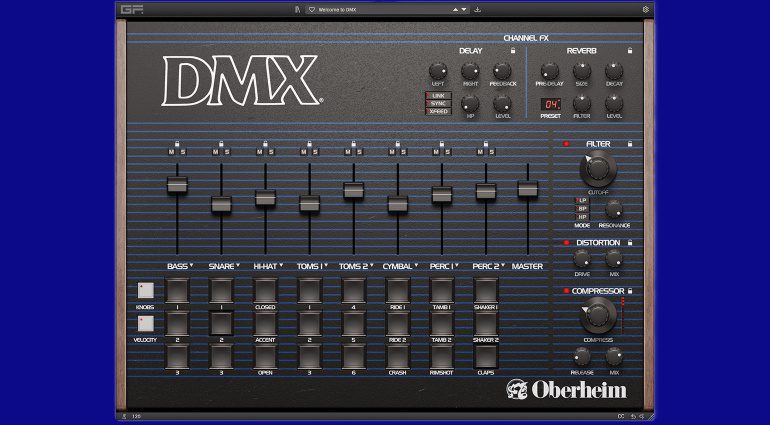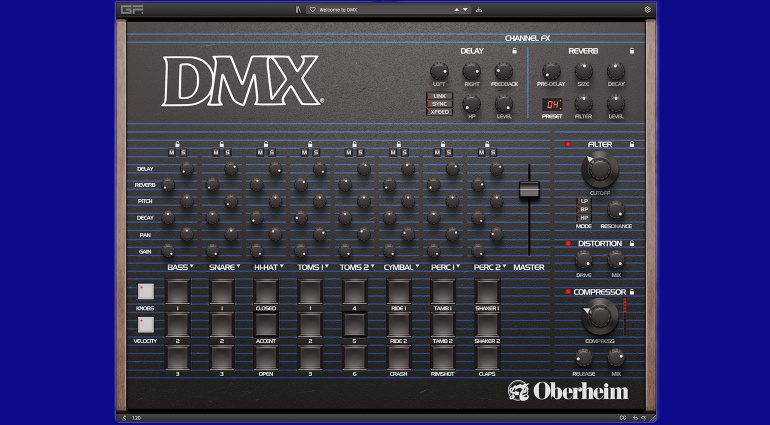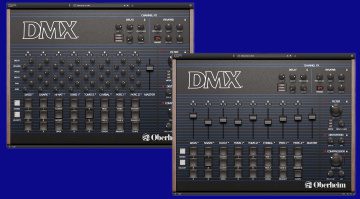One of the 80’s most loved and sought-after drum machines returns in the 21st century via the GForce Software Oberheim DMX, the first officially licensed plugin of its kind.
Drum Machines. Once thought of as the end of human drummers. Thankfully, that prophecy never came true. But they soon became ubiquitous in popular music. When Roger Linn released the legendary LM-1, with its sample-based sound set, everyone else followed. Including Roger’s friend, Tom Oberheim.
The Age of the Drum Machine
You had to be around at the time to truly experience the impact that sample-based drum machines had. Which means you probably have to be as old as me. Ugh! But what a time to be alive! 1980 was the year of the drum machine. It saw the launch of not only the DMX, but the LM-1 and the TR-808.
Whilst all three of those machines have achieved iconic status, the DMX hasn’t been properly recreated, unlike the others. And yet it features on some of the most important records of the time. New Order’s ‘Blue Monday’ and Pet Shop Boys ‘West End Girls’ are just two that spring to mind.
The GForce Software Oberheim DMX
But all of that changes today. In a continuing series of officially sanctioned products, the GForce Software Oberheim DMX finally delivers the DMX experience in software. It’s a real blast from the past and long overdue.
Visually, it is unmistakeably an Oberheim DMX with the distinctive lettering and blue pinstripes. All the buttons, faders and knobs are authentic in design. As you’d expect from a GForce recreation, they’ve added the incredibly useful delay and reverb FX found in their other OB plugins.
Additions & Subtractions
The astute amongst you will notice that in place of the sequencer functions of the original DMX, there are filter (SEM Multi-mode), distortion and compressor controls. There is also a second ‘layer’ of controls, exposed using the ‘Knobs’ button. This allows you to dial in FX levels, as well as pitch, decay, panning and gain per drum sound.
Some people might bemoan the lack of a sequencer, but honestly, whenever I have a drum machine plugin, I never use its built-in pattern sequencer because I already have that in a DAW. So why waste time building that part when I’m guessing most people won’t use it.
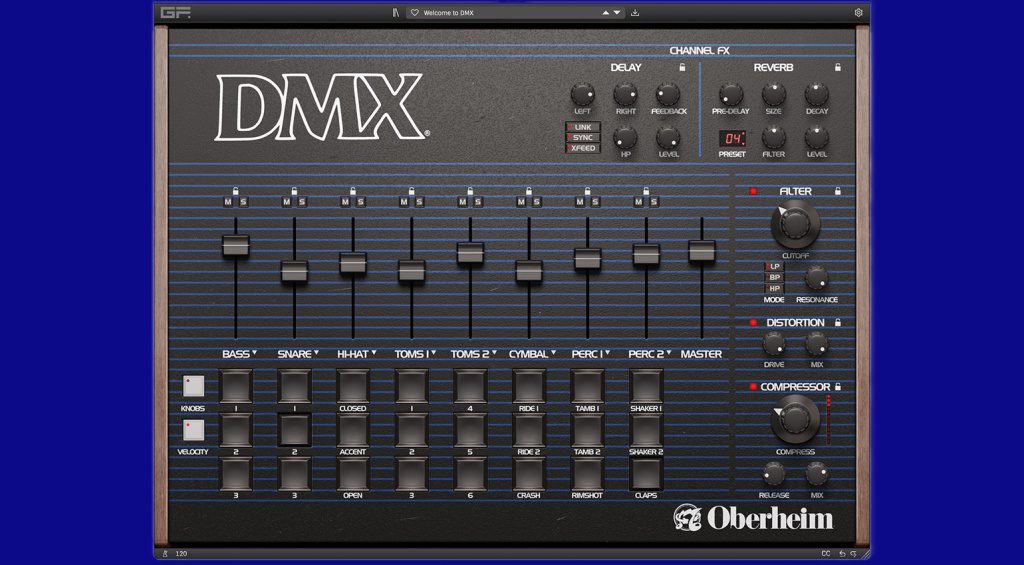
The Sounds
One of the best things about the GForce Software Oberheim DMX is the sound library. So often with these EPROM based machines, many great sounds came not just from the factory chips but from expansion chips. GForce have truly delivered here.
Not only are all the original Oberheim DMX EPROMS included, but also the revised 1983 EPROMS, the EPROMS from the stripped-back little brother, the Oberheim DX AND all the Sequential DrumTraks sound kits. Those DrumTraks kits have all been sampled through a DMX to benefit from its signal path.
The GForce Software Oberheim DMX comes with over 60 preset kits and over 85 MIDI files featuring a wealth of classic patterns.
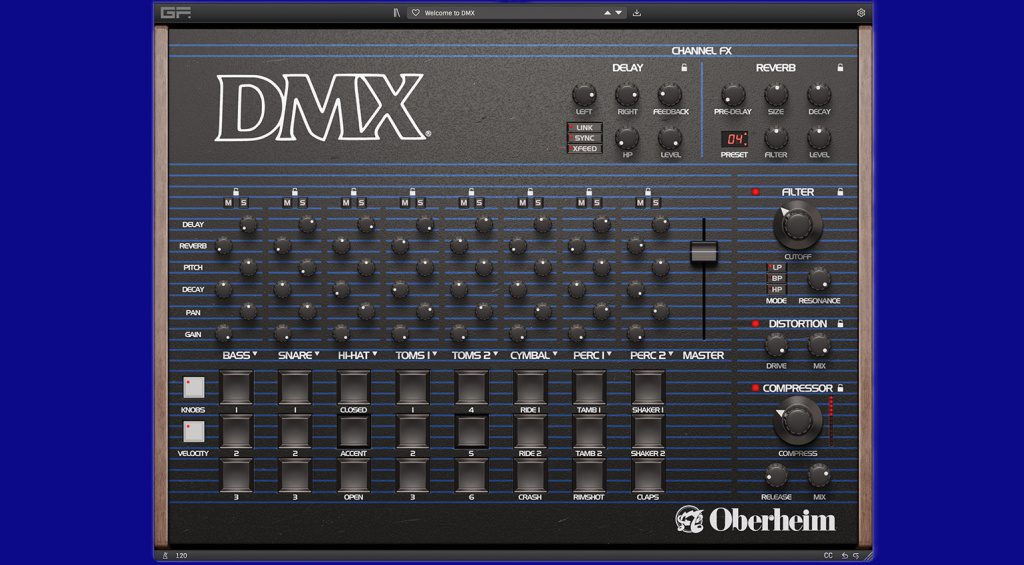
In Conclusion
I am over the moon that this exists. I am a huge lover of early drum machines. As a drummer myself, I never felt threatened by them, and in true Phil Collins style, I embraced them as a tool to enhance my repertoire.
GForce Software’s Oberheim DMX is available for Mac & PC in all the usual formats, including a standalone version.
And at €26 (intro offer), this thing is an absolute steal, considering the original hardware was 100x that back in 1980! Grab this now!
Image Sources:
- GForce Software Oberheim DMX: GForce Software
- GForce Software Oberheim DMX: GForce Software

